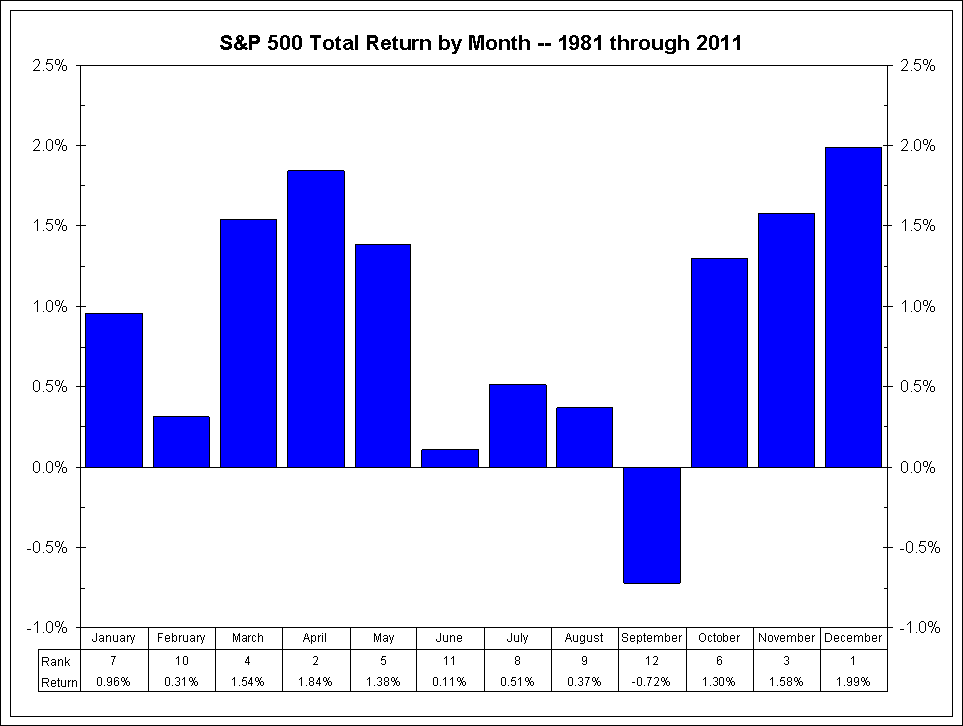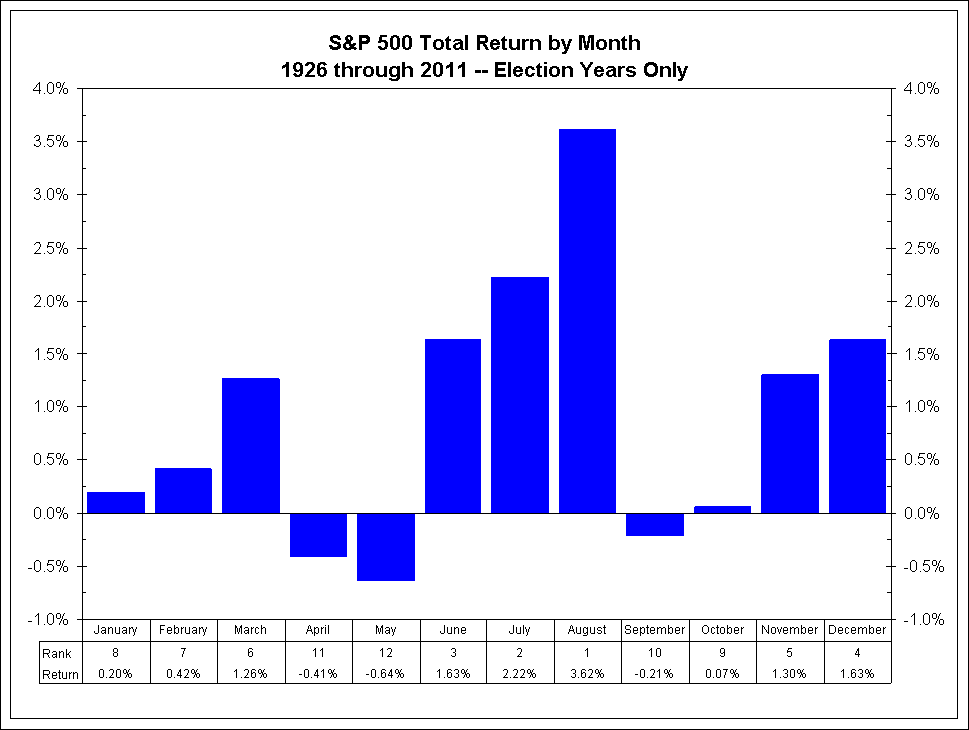>
However, the chart below shows just how fickle these seasonality charts can be. Looking at the seasonal return for stocks during election years shows a vastly different picture.
>
>
While investors are not likely to make investing decisions based solely on a catchphrase such as, “Sell in May and go away,” the charts above illustrate the degree to which seasonal data can be manipulated to fit one’s bias. For this reason, we have always viewed seasonal charts as interesting eye candy and nothing more.
Source: Bianco Research
Comment: As the chart above shows, May typically ends a seasonally strong period for stocks.
US Funds Sell In May And Go Away?
Not This Year One catchy investing maxim that’s popular this time of year is “sell in May and go away,” the notion that investors should cash in their investments and take the summer off. Historically, this hasn’t been a bad strategy…Last year, investors who employed the “sell in May” strategy averted an almost 17 percent drop in the S&P 500 and a nearly 25 percent drop in the MSCI Emerging Markets Index from June-September. Summer of 2010 was a similar experience…May has historically been a strong one for markets. Since 1988, the median return for the S&P 500 and MSCI Emerging Markets during May has been 1.22 percent and 1.28 percent, respectively. In fact, May returns rank in the top half for both indices. This is also a presidential election year in the U.S., which has historically produced positive returns. Since 1972, the stock market has rallied in 5 of the 8 election years, according to J.P. Morgan, with market gains of 12-26 percent. Only during recession years (2000 and 2008) did the S&P 500 provide negative returns.




What's been said:
Discussions found on the web: